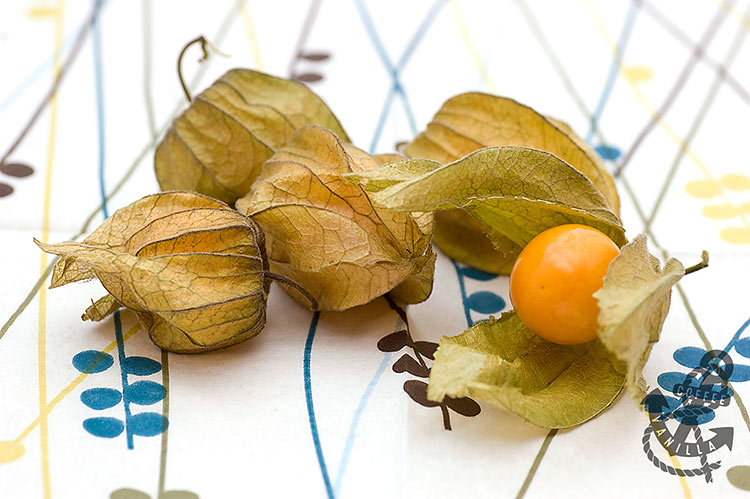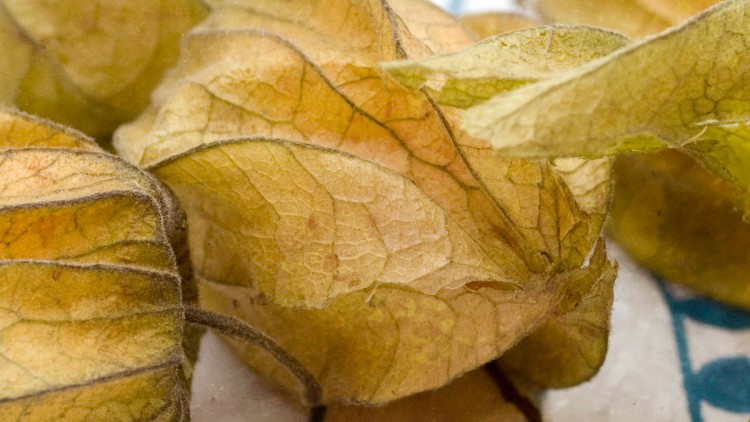Pictured below Physalis peruviana is also called husk tomato, ground cherry, ground tomato, cape gooseberry, oha berry, haranksh, golden berry, uchuva, Inca berry, uvilla, or sfivalis.
Physalis peruviana is indigenous to South America, but grows well in Africa. It is related to tomato and potato, not gooseberry like the name can suggest.
The berry is round, 1.5 to 2.5 cm in diameter, of a dark yellow almost orange colour. The inner berry is covered with a lantern-like hood which should not be eaten. Berries are glossy, sticky, sweet and spicy… they resemble in taste something between tomato and sharon fruit. They are excellent source of vitamin C.

Its uses are similar to the common tomato or to fruits with a refreshing taste. Once extracted from its husk, it may be eaten raw or used in salads, desserts, as a flavouring, and in jams and jellies. They can also be dried and eaten much like figs, apricots or grapes. Because of the fruit’s decorative appearance, it is sometimes used in restaurants as an exotic garnish for desserts.
There is many more varieties of physalis, some are edible, some can be used to produce medicines, or for decoration purposes only.
For instance: Physalis philadelphica also called tomatillo, Mexican tomato, jamberry, husk tomato, husk cherry, miltomate, ground cherry. It looks similar to Physalis peruviana, but its fruits are green or green-purple and the husk is more tight on the fruit and green or yellowish green.
Physalis alkekengi is also very close relative, it has larger and bright red husks and fruits. It is called also bladder cherry, Chinese lantern, Japanese lantern, winter cherry or hōzuki in Japanese. This variety of physalis is used mostly for decoration.
TIPS
Recipe idea: Physalis Dipped in Chocolate
NOTES
Most information source: Wikipedia.

Great post! I’d never seen physalis, though I am very familiar with its cousin, the tomatillo. I’ll have to be on the look-out for it!
I’d only just worked with the tomatillo but hadn’t really stopped to think that there’d be other fruits/vegetables out there like it. This is interesting–hopefully I come across it!
Brilliant!
Margot, how did you know that I’ve been eyeing these in the seed catalog for years? They’re supposed to grow well in my region… and now that you’ve described them so nicely, I just might try them next year!
Thanks for such an informative post.